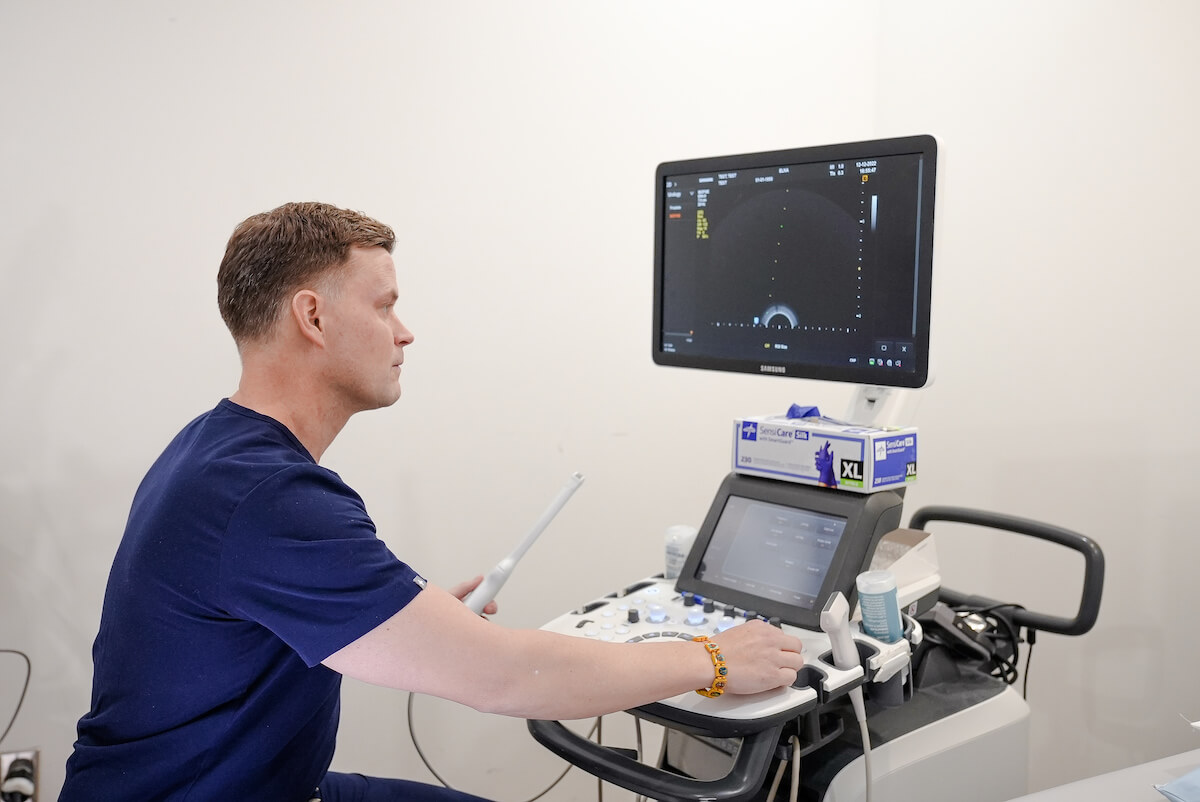Home > Treatments > HoLEP
HoLEP has been used in many parts of the world, and has proven to be a safe and effective procedure to treat BPH. Its main advantage is that it removes a large amount of prostate tissue that causes obstruction without ever requiring making incisions to the body.
Patients who undergo HoLEP experience a quick stay overnight for observation and recovery. Following the procedure, patients are expected to return to their regular activities within a week with relieved symptoms and a happier lifestyle.
Although many urinary symptoms from BPH can be treated without surgery, patients may eventually need to undergo it to avoid long-term problems such as urine retention, bladder stones, and urinary tract infections. Patients who are recommended for HoLEP are usually symptomatic due to very large prostates.
If patients have bleeding problems, or have had certain types of prostate treatments previously, then they may not be candidates for HoLEP. Additionally, patients must be able to lie on their back with their legs raised, as this position is required in order to perform the procedure.
Find your BPH symptom score.
Consult with our world-class medical experts within days of your call.
So you can get back in the game quickly. No need to be in the hospital. And no need to continue taking BPH medications.
Firstly, your doctor will conduct a preoperative work-up, which includes a physical examination to determine the severity of your symptoms, a digital rectal exam, a measure of urinary flow rate, and a test to see how much urine remains in the bladder after urinating - these tests will help your doctor identify the level of obstruction in the urinary tract.
Next, a transrectal ultrasound may be performed to measure the amount of enlargement in the prostate gland. This will help your doctor determine how much time will be required to perform the surgery. The larger the size of the enlarged prostate, the more surgery time is needed.
Before the procedure begins, you will be given general anesthesia and an injection of antibiotics to reduce the risk of getting an infection. Next, a resectoscope (telescopic camera) is inserted through the urethra, which allows your doctor to view the internal structure of your prostate gland, and lets them see where the incisions are going to be made during the surgery.
The holmium laser is then inserted into the resectoscope and is used to free up the enlarged prostate tissue from the outer shell. Once this excessive tissue is deposited into the bladder, the laser is removed and a morcellator is inserted to suction out the remaining tissue. Finally, the resectoscope is removed and a urinary catheter is put in place.
After the operation is complete, you will be required to remain in the hospital overnight for observation to ensure that everything is okay. It is normal to experience light bleeding from the prostate within the next 12 hours.
If there is no excessive bleeding, the catheter will be removed the morning after the surgery. If you are able to urinate normally without any issues, then you will be allowed to return home without the catheter. However, if you are unable to urinate, then the catheter will be put into place again and will be removed the following week.

The HoLEP procedure generally takes around 1 hour to complete. Patients typically require an overnight stay after the surgery.
Within a couple of days following the procedure, it is normal to experience pain when passing urine. Medications may be used to relieve these symptoms until improvements are made. Patients are highly encouraged to drink a large amount of fluids once the catheter is removed. This will help clear the urine of any blood.
Following the procedure, patients will be seen by the doctor to monitor their recovery process and to repeat certain tests, such as urinary flow rate, symptom score, and bladder scan. These are conducted to determine the effectiveness of the surgery. Patients are generally seen at six weeks and six months after the procedure.
Effective BPH symptom relief with minimally invasive and low risk treatments.

These can include developing injuries to the urethra, the bladder, or the capsule of the prostate.
Other risks include infection in the bladder, testes, or kidneys, development of scar tissue, or a need for a blood transfusion due to excessive bleeding. In very rare cases, the return of urinary obstruction will require patients to undergo another operation.
